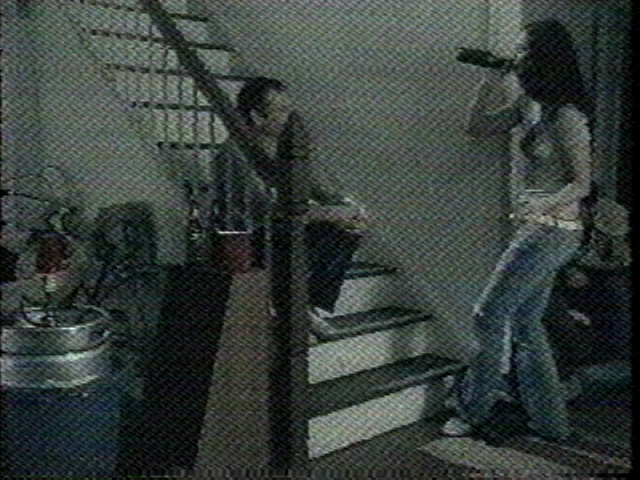Who made the decision to air this in schools?
From Jim Metrock:
Before we go to the latest video, let’s give a go over a little history. Over and over again, year in and year out, I have witnessed Channel One News sending truly awful, irresponsible messages to young people about underage drinking. The message they send to their captive audience is: Teens are going to drink. Teen drinking isn’t a problem. Binge drinking is a problem for teens. If you think you drink too much, don’t talk to a parent or a teacher. There is only one thing you should do. You should visit channelone.com.
If you are new to the Channel One News controversy, you might not believe me. I understand. Why would Channel One send out such awful messages to young people? One reason is they can’t sound “preachy” to their audience. As it is, so few are watching that they can’t afford to be seen as “uncool” about alcohol consumption. So Channel One News never tells students not to ever drink alcohol. What they tell them is to be careful not to drink in excess.
See for yourself.
First, take a look at the end of a story they did about teen alcoholics. All parents need to see is the very end of the story because at this point Channel One’s anchor is talking directly to students. This is where Channel One’s position on teen drinking is made clear. Drinking problem?
Excuse me, Channel One executives, who gave you permission to normalize alcohol use among teens and preteens? Your entire audience is underage and you write scripts that anchors read that talk about students with “drinking problems.” That shouts out to students that Channel One News believes there is such a thing as “non-problem” drinking among students. How many teen drinkers believe they “drink too much”? And if this irresponsible message wasn’t bad enough, why didn’t Channel One tell students to talk to a parent or a teacher or someone older that they feel comfortable talking to?
Also, did you notice Channel One telling their secondary school students to go to Channeone.com to take a QUIZ to determine if they have a DRINKING PROBLEM.
Here’s another example. This one begins with a typical Channel One question: “Are teenagers and alcohol a dangerous mix?” Parents know the answer to that. Parents would never ask such a stupid question, but this was shown in classrooms down to the fifth grade.
Do you drink too much? That line may be appropriate for college students but is irresponsible in a show seen by young people no older than 18 and as young as 10. I guess Channel One News would view this a successful story if they knew most middle school students could honestly say that they don’t drink too much. How moronic can Channel One get? The answer to that is: they can get a lot more moronic.
Here’s another. This Channel One anchor asks teens and preteens if they think they might be an alcoholic, if so go to Channelone.com. The Channel One mantra is: You have a problem if you drink too much alcohol. Obviously, Channel One believes teens and preteens can be drinkers and not be alcoholics. Their plea is aimed at those who might be alcoholics. Parents have no idea this normalization of alcohol use is happening when their child is forced to watch Channel One News.
With this as a preface let’s view the latest outrage by Channel One News.
In February, Channel One aired a new PSA aimed at people who drive but aren’t “knee-walking” drunk. The new focus by the Department of Transportation is to drive home the point that if you just have enough alcohol to get a “buzz” you still shouldn’t drive a car.
Great message? Absolutely. You don’t have to have .08% alcohol blood level to be impaired behind a wheel.
The problem with this spot being on Channel One is obvious. It wasn’t intended for an audience under the legal drinking age.
Channel One is lazy. They don’t think about the impact spots like this have on their audience. The firm that made these PSAs said that it was created for people 21-34. By showing this spot to an audience that has ZERO percent of its members of legal drinking age, you convey a message that drinking is acceptable – DRIVING after drinking too much or just one drink is not acceptable, but you sure can party if you aren’t driving.
If a teenager watches this spot on Channel One and perceives the actors to be teenagers (one could draw that conclusion) then this is a teen drinking party. Notice the keg in the picture above. If this is a teen party, the only problem here is this “buzzed” driver about to get in her car. Why show HS and middle school kids a short film like this that clearly implies that alcohol use (a large amount of alcohol use since there are beer bottles and at least one keg in this short segment) is standard at teen parties?
This is why parents and teachers are saying, “Enough. Channel One has to go.”
|
From the Ad Council. These ads are NOT meant for |
| Buzzed Driving is Drunk Driving
, |
See for yourself. Buzzed Driving
is Drunk Driving. (February 2006 shown in middle schools
and high schools)
Script
“It’s easy to tell if you’ve had way too many.”
“But what if you’ve had just one too many?”
“Buzzed driving is drunk driving.”


